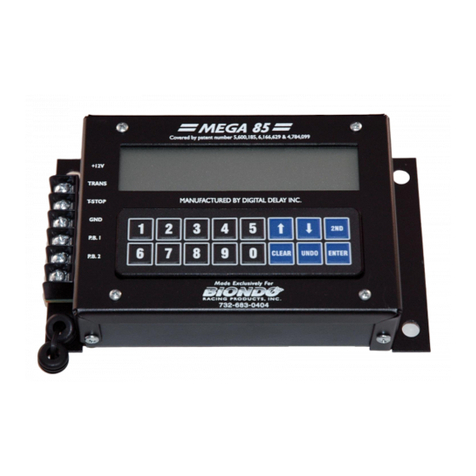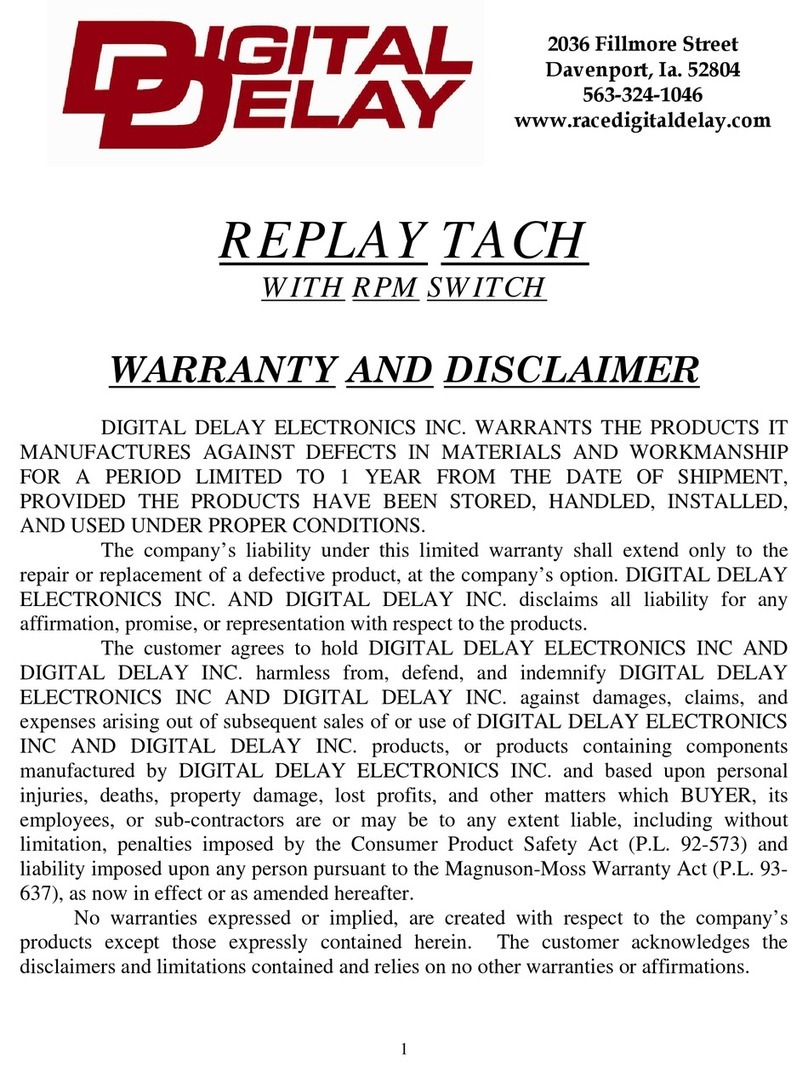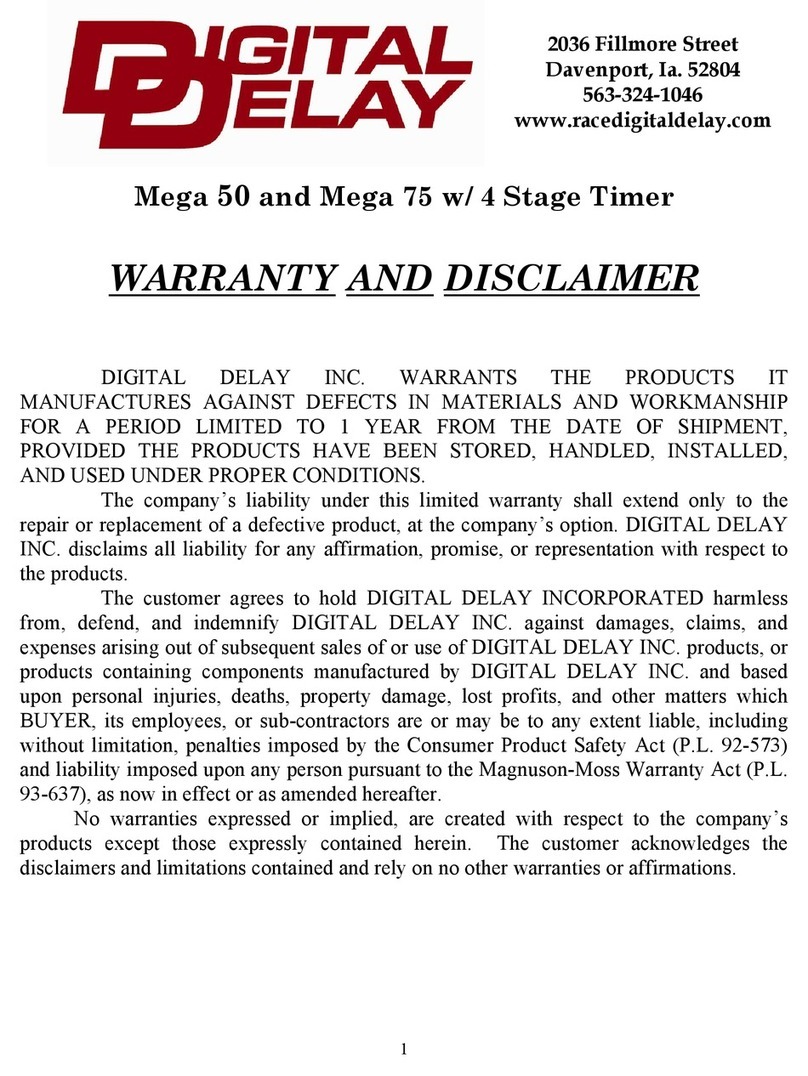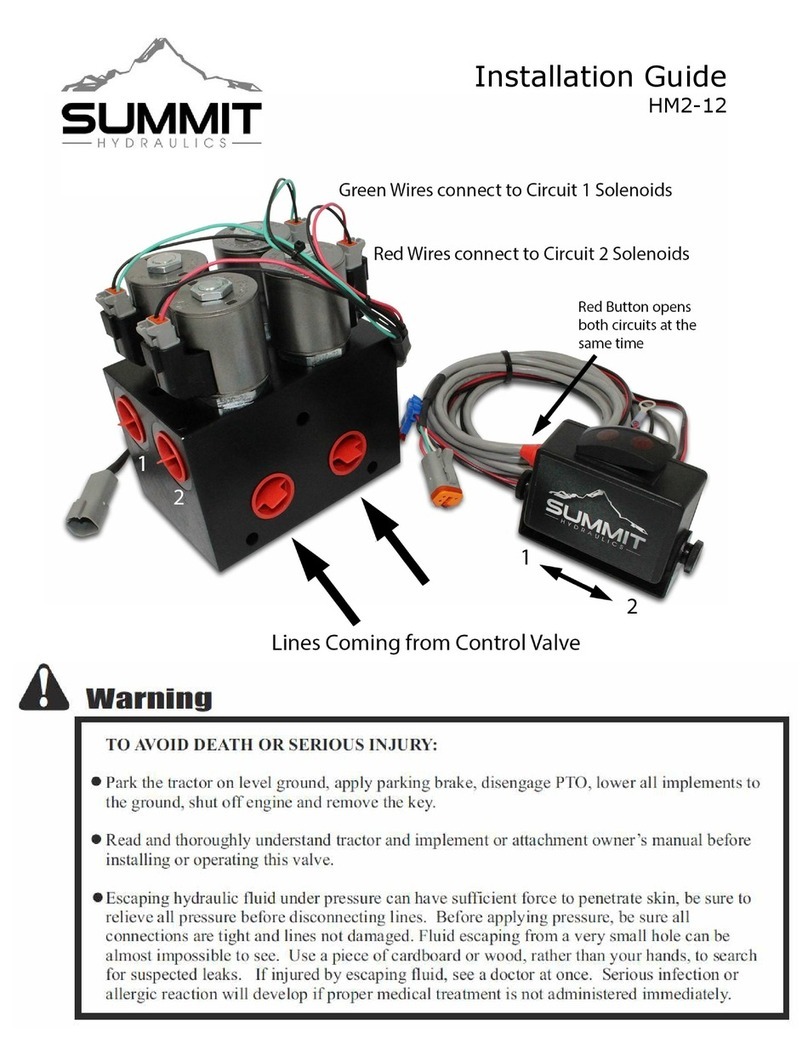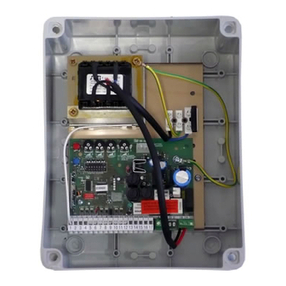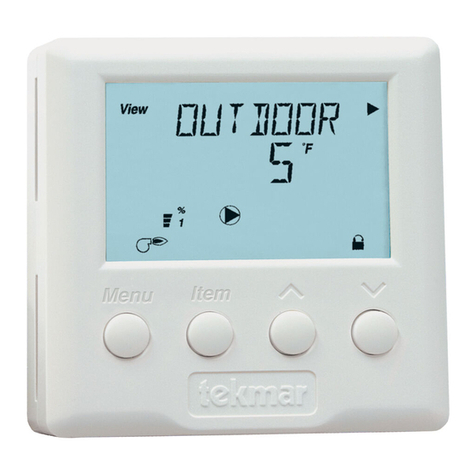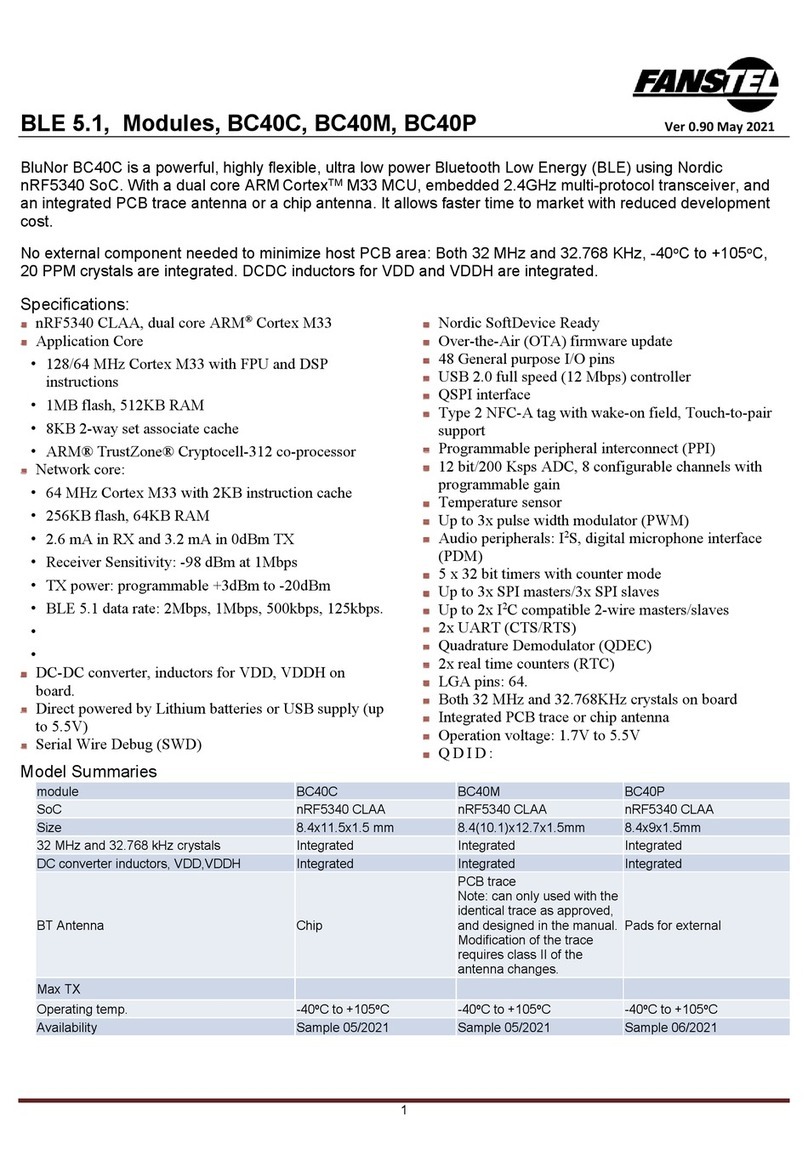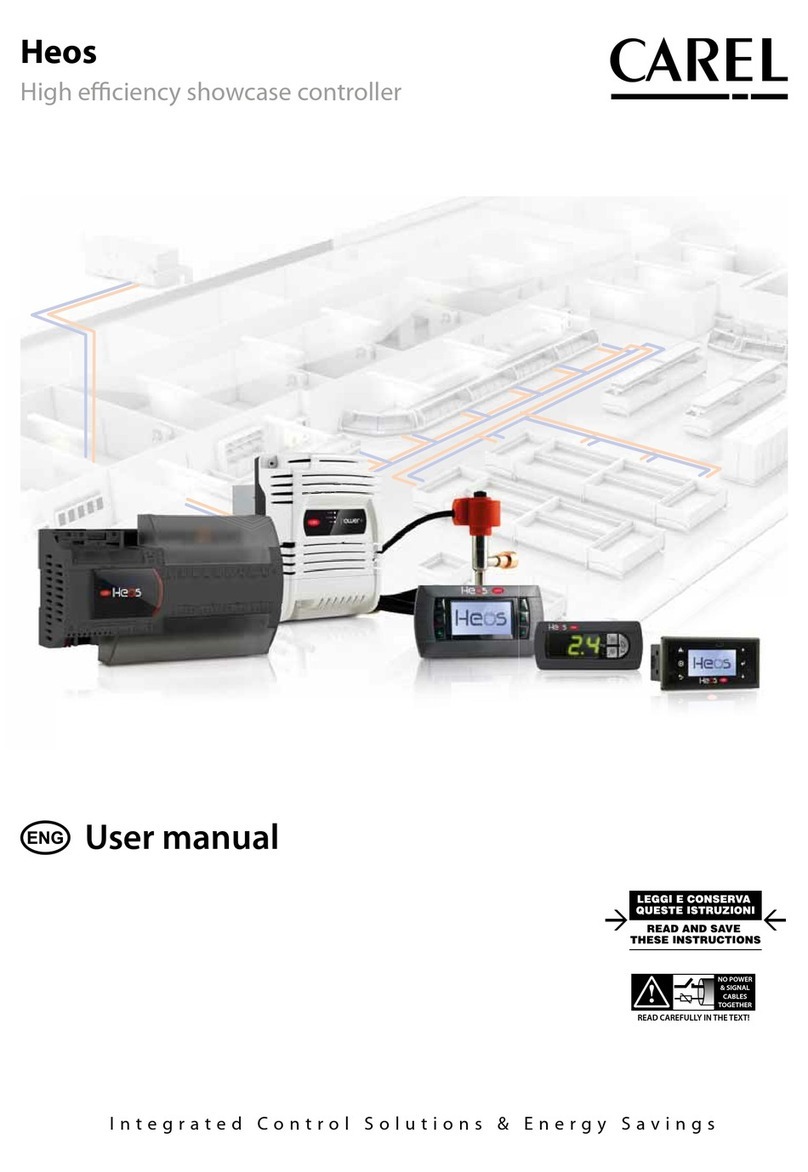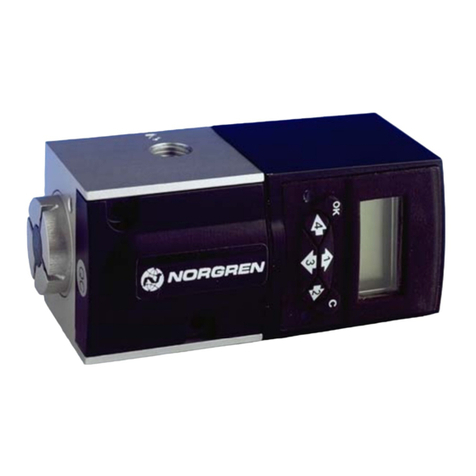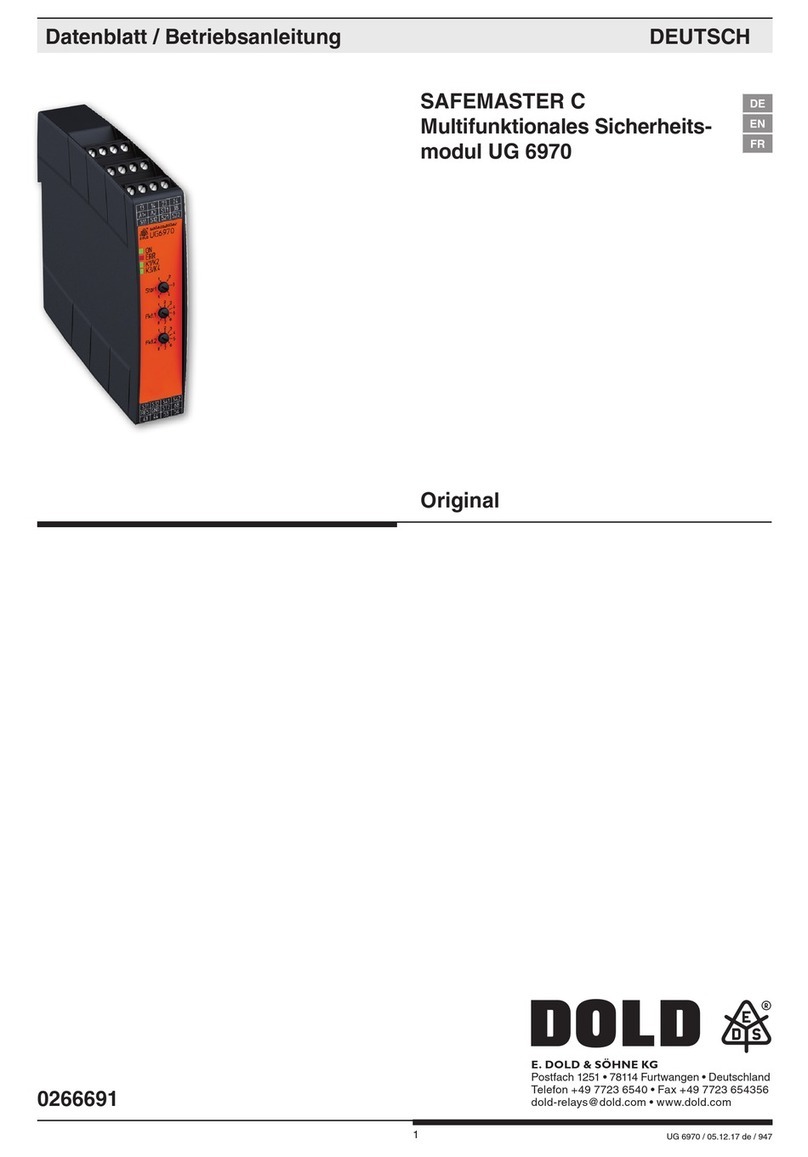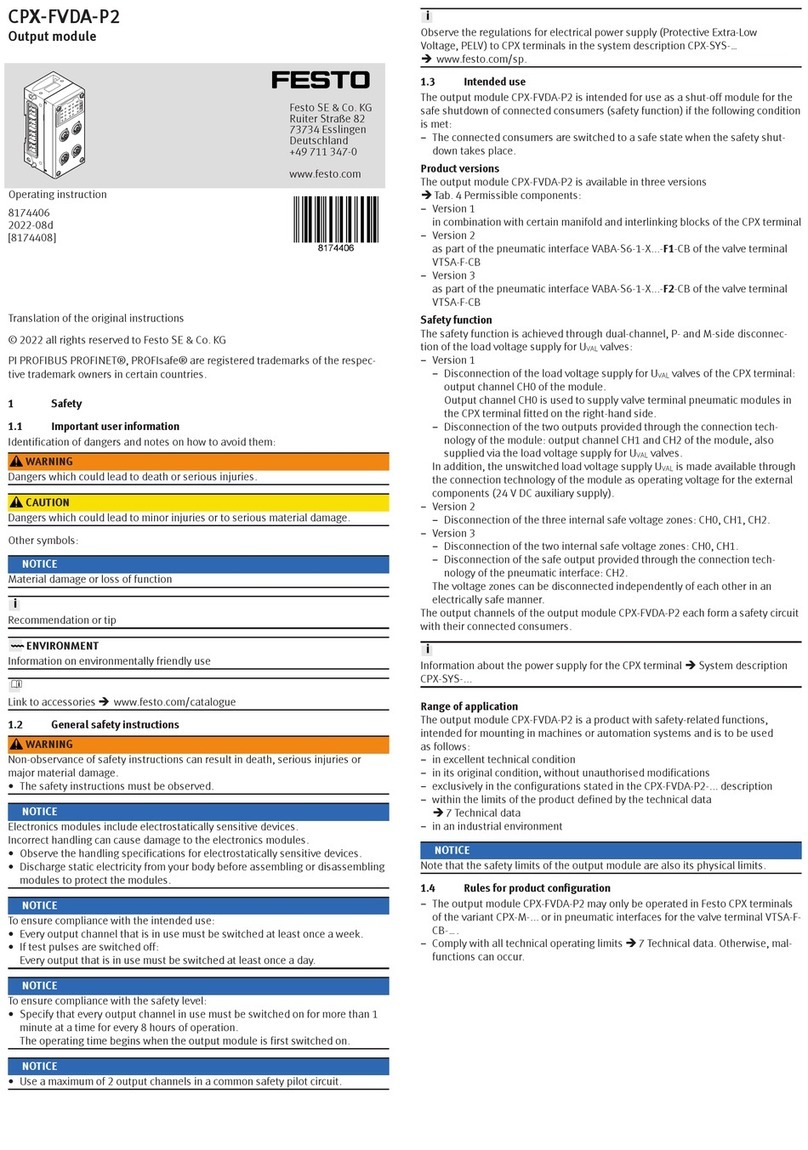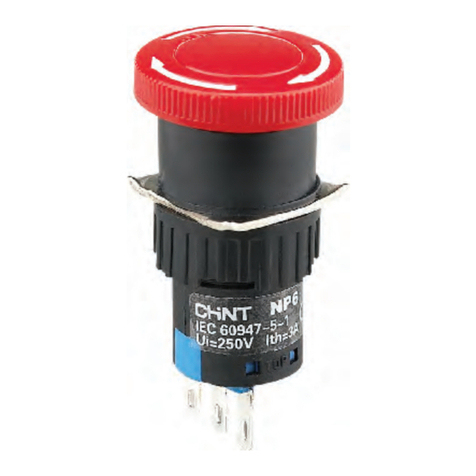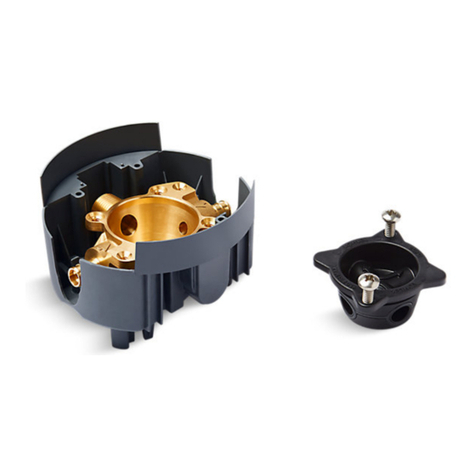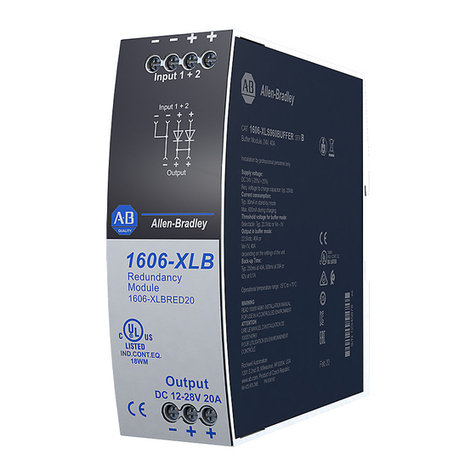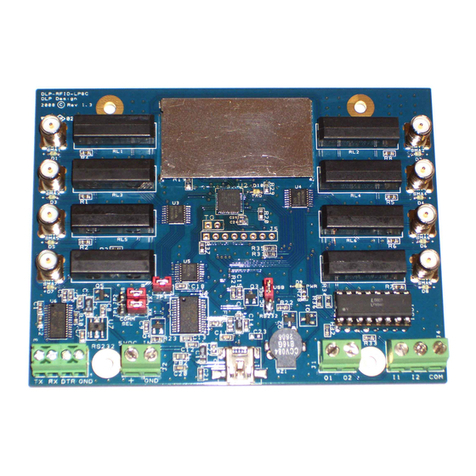DIGITAL DELAY Elite 95 User manual

1
2036 Fillmore Street
Davenport, Ia. 52804
563-324-1046
www.racedigitaldelay.com
Elite 95
WARRANTY AND DISCLAIMER
DIGITAL DELAY ELECTRONICS INC. WARRANTS THE PRODUCTS IT
MANUFACTURES AGAINST DEFECTS IN MATERIALS AND WORKMANSHIP
FOR A PERIOD LIMITED TO 1 YEAR FROM THE DATE OF SHIPMENT,
PROVIDED THE PRODUCTS HAVE BEEN STORED, HANDLED, INSTALLED,
AND USED UNDER PROPER CONDITIONS.
The company’s liability under this limited warranty shall extend only to the
repair or replacement of a defective product, at the company’s option. DIGITAL DELAY
ELECTRONICS INC. disclaims all liability for any affirmation, promise, or representation
with respect to the products.
The customer agrees to hold DIGITAL DELAY INCORPORATED and
DIGITAL DELAY ELECTRONICS INCORPORATED harmless from, defend, and
indemnify DIGITAL DELAY INC. and DIGITAL DELAY ELECTRONICS INC. against
damages, claims, and expenses arising out of subsequent sales of or use of DIGITAL
DELAY ELECTRONICS INC. products, or products containing components
manufactured by DIGITAL DELAY ELECTRONICS INC. and based upon personal
injuries, deaths, property damage, lost profits, and other matters which BUYER, its
employees, or sub-contractors are or may be to any extent liable, including without
limitation, penalties imposed by the Consumer Product Safety Act (P.L. 92-573) and
liability imposed upon any person pursuant to the Magnuson-Moss Warranty Act (P.L. 93-
637), as now in effect or as amended hereafter.
No warranties expressed or implied, are created with respect to the company’s
products except those expressly contained herein. The customer acknowledges the
disclaimers and limitations contained and relies on no other warranties or affirmations.

2
2036 Fillmore Street, Davenport, Ia. 52804
563-324-1046 www.racedigitaldelay.com
Elite 95 Instructions
Congratulations on your purchase of the Elite 95, the second Delay Box of the new Elite Series from Digital Delay.
The new Elite Series of Delay Boxes has several additions while retaining all the features of the older Mega Series Boxes.
With the Elite Series, Digital Delay enhanced the Driver’s Reaction Tester by adding an LED to simulate the start of the tree
and by adding the ability to display the average of the reaction times during a practice session. The Elite Series also adds the
ability to Tap Up and Down on the same pass. Digital Delay has also added a fourth Push-button Mode to the Elite 95
designed especially for tracks using CrossTalk.
Contents:
Warranty and Disclaimer.................................................................................Page 1
Features, and Specifications............................................................................Page 3
The Terminal Strip ..........................................................................................Page 3
The Keypad .....................................................................................................Page 4
Setting Dial-Ins and Delay Times....................................................................Page 5
Setting and Displaying the Tap Up/Down.......................................................Page 5
Setting Push-button Mode and Interrupt Time................................................Page 6
How Late.........................................................................................................Page 8
Understanding the Driver’s Reaction Tester ...................................................Page 8
Understanding and Connecting a By-pass Push-button .................................Page 8
Explanation of the 4-Stage Timer....................................................................Page 9
Setting Stage Times.........................................................................................Page 9
Setting Throttle Mode......................................................................................Page 9
Explanation of the Starting Line Enhancer......................................................Page 10
Setting the Starting Line Enhancer Mode (S.L.E.)..........................................Page 10
Mounting and Wiring the Unit ........................................................................Page 11

3
Features and Specifications
Features:
• Microprocessor controlled timing
• Discrete I/O (input - output) construction
• Retains all numbers even with power disconnected from unit
• Large illuminated display for easy reading of information day or night
• Self-test mode on all display functions
• Dust & splash-proof backlit keypad with detent (positive feel)
• Hit the tree twice with one or two separate button
• Instant timing cycle reset
• Programmable Push-button Interrupt Time
• Programmable Tap Up and Down feature for the delay (In Push-button Mode 1, 3, or 4)
• Programmable Starting Line Enhancer
• Built-in Driver’s Reaction Tester with LED
Specifications:
•Input Voltage Range: 10 to 18 Volts DC (16 Volt compatible)
•Operating Temperature Range: 0 to 150 degrees F.
•Push-button Current: .1 AMPS at 12 VDC
• Three Separate Inputs
•PB1
• PB 2 or Tap Up PB
•TapPB
The Terminal Strip
+12VDC Terminal: Connect the +12VDC terminal to a switched +12 Volt source with enough amperage capable of
driving all outputs at the same time.
Transbrake Terminal: Connect the Transbrake terminal to the Transbrake solenoid. The Transbrake terminal also
connects to the low side of the 2-Step, if used.
Throttle Stop Terminal: Connect the Throttle Stop terminal to the Throttle Stop solenoid, if used. The Throttle Stop
can then be used as a Starting Line Enhancer or down track Throttle Stop.
Ground Terminal: Connect the Ground terminal to the Neg. terminal on the battery or to good steel ground, not
aluminum.
PB-1 Terminal: In Push-button Modes 1 and 2 the Push-button connected to PB 1 terminal is used to control the
primary delay only. In Push-button Modes 3 and 4 the Push-button connected to PB 1 terminal is used to control the primary
delay and the secondary delay in sequence.
PB-2 Terminal: In Push-button Mode 2 the Push-button connected to PB 2 terminal is used to control the secondary
delay only. In Push-button Modes 1, 3, or 4 the Push-button connected to this terminal can be used as a Tap Up Push-button.
Tap Terminal: In Push-button Mode 2 the Push-button connected the Tap terminal can be used as either a Tap Up or Tap
Down. When in Push-button Modes 1, 3, or 4 the Push-button connected to the Tap terminal can only be used as a Tap Down.

4
The Keypad
The keypad is made up of numerical keys that are black and function keys that are blue. The numerical keys 1-7 are
used to select what information is shown on the display. The numerical keys are also used in-conjunction with the function
keys to enter new information. The Clear key is used to clear out old values before entering new values. The Up Arrow and
Down Arrow keys are used for making small number changes quickly. The 2ND key is used to switch the selection arrows
from side to side on the screen. The Enter key is used to store a change made to a value or a setting. The UNDO key is used
to undo an error when entering a value. The UNDO key can also restore a value that has just been cleared by an accidental
press of the Clear key.
Function Keys:
The function keys are used when making changes to either values or settings.
Example:
1) Select the Dial-Ins by pressing the 1 key for the Dial-Ins to be displayed.
2) The Dial-in screen will now be displayed with the selection arrows on the left side of the screen above
Your Dial. The selection arrows are used to show what side of the screen is selected, to move the selection
arrows to Their Dial press the 2ND key. The selection arrows will now be on the right side of the display
above Their Dial.
3) Next press the Clear key, this will clear out the value for Their Dial making the Elite 95 ready for a new
value.
4) Now using the numerical keys, enter a new value for Their Dial. As the numbers are entered they will
appear on the display. Once a new value been entered, press the ENTER key to store the new value in
memory.
Note: If an error is made while entering, press the UNDO key to erase the last digit. This can be repeated as many times as
necessary until the display is blank. Pressing the UNDO key one more time restores the original number.
Numerical Keys 1-7
The Numerical keys 1-7 are used to select what information is shown on the display. For example, if the Dial-Ins are
being displayed and the Delay times are wanted, press the number 2 key.
Displays using 1-7 Left side of screen Right side of screen
1 YourDial-in TheirDial-in
2
Delay1 Delay2
3
HowLate Tap(up or down)
4 PBmode SLE
5
Stage1 Stage2
6
Stage3 Stage4
7
Display Test Mode / Driver’s Reaction Tester

5
Setting Dial-In Times
The Dial-in values are used when crossing over (going off your opponent’s top yellow). The Elite 95 uses the Dial-in
values by taking Their Dial and subtracting Your Dial, if the result is a positive number the result is added to Delay 1. If the
result is zero or a negative number the result is thrown out and no time is added to Delay 1.
To set a new Dial-In time, press the 1 key. Your Dial-in is shown on the left side of the screen, while Their Dial-in is
shown on the right side of the screen. Next select which side of the screen is to be changed. This is done by using the 2ND
key to move the selection arrows to either the left or the right side of the screen. Then press the CLEAR key and the selected
side of the display will go blank indicating the Elite 95 is ready to accept the new time. Enter a new time using the numerical
keys. If a mistake is made while entering the number, pressing the UNDO key will erase the last digit entered. The UNDO
key can be repeatedly pressed as necessary until the display is blank. Pressing the UNDO key while the screen is blank will
restore the original number. Once the new number has been entered press the ENTER key to store in memory. If the number
entered uses all four digits pressing the enter key is not required.
Note: To turn the Crossover feature off, set both Dial-ins to zero.
Setting Delay Times
The Delay times are used to delay the release of the Transbrake solenoid in relation to the release of a button. In the
simplest form, the driver releases a button on the top yellow. This starts the delay time counting down to zero. When the
countdown reaches zero the Transbrake solenoid is released. The Elite 95 has two Delay times labeled Delay 1 and Delay 2.
Delay 1 is the primary delay. Delay 1 is used to go off the driver’s top yellow or when in-conjunction with the Dial-ins, to go
off the opponent’s top yellow. Delay 2 is a secondary delay and can be started when the driver feels the primary release was
bad. This is explained further in PB Modes.
To set a new Delay time into either Delay 1 or Delay 2, press the number 2 key. Then follow the same procedure for
entering a new number as explained in setting new Dial-In times.
Setting and Displaying the Delay
Tap Up/Down Information in PB Mode 2
To display the Tap Up/Down information, press the 3 key. The Tap information is shown to the right side of the
screen. The left most digit shows the number of times the Tap Up/Down Push-button was pressed. The two right hand digits
show the programmable time (0 to 99 thousandths of a second) to be subtracted from or added to the delay time. If a minus
sign is present in front of the two digits the Elite 95 is set to Tap Down, and a subtraction from the delay time will be done. If
there is a blank in front of the two digits the Elite 95 is set to Tap Up, and an addition to the delay time will be done. To select
either Tap Up or Tap Down mode use the arrow keys. Press the Up Arrow key for Tap Up mode or press the Down Arrow
key for Tap Down mode. To change the Tap amount value, press the CLEAR key and then using the numerical keys enter the
new tap value between zero and ninety-nine.
The tap value goes to the thousandths so a 10 on the screen represents 1 hundredth in value.
Setting and Displaying the Delay
Tap Up/Down Information in PB Modes 1, 3, and 4
To display the Tap Up/Down information, press the 3 key. The Tap information is shown to the right side of the
screen. The left most digit shows the Overall Tap Count. The two right hand digits show the programmable time (0 to 99
thousandths of a second) to be subtracted from or added to the delay time. This value is used for both Tapping Up and Down.
To change the Tap amount value, press the CLEAR key and then using the numerical keys enter the new tap value between
zero and ninety-nine. The tap value goes to the thousandths so a10 on the screen represents 1 hundredth in value.
Because the Elite 95 allows both Tapping Up and Down on the same pass when in PB Modes 1, 3, and 4, an Overall
Tap Count system had to be used. The Overall Tap Count system lets the driver know what the result was for multiple presses
of either or both Tap buttons. For example if the Tap amount was 5 thousandths and if Tap Up button was pressed three times
+ .015 and the Tap Down button was pressed two times -.010, the resulting tap amount of +.005 would be added to the delay
time. The Overall Tap Count would be one and because the result was a single Tap Up, the minus sign would not be shown.
Another example, using the same Tap amount of 5 thousandths, if Tap Up button was pressed once + .005 and the Tap Down
button was pressed three times -.015, the resulting tap amount of -.010 would be subtracted from the delay time. The Overall
Tap Count would be two and because the result was two Tap Downs, the minus sign would be shown.

6
Setting Push-button Mode and the
Push-button Interrupt Time
The Elite 95 has four Push-button Modes. Each Push-button Mode changes how the Elite 95 will operate. Push-
button Mode 1 is the most commonly used. It only uses one Transbrake timer, the primary timer. The rest of the Push-button
Modes use two Transbrake timers, the primary and secondary Transbrake timers. The Push-button Modes allow the Elite 95 to
be tailored to match the driver’s needs. There is also a setting for the Push-button Interrupt Time. This safety feature
temporarily disables the buttons used to apply the Transbrake, when the vehicle leaves the starting line. This prevents the
Transbrake from being accidently applied by the driver inadvertently hitting a button during the race.
Push-button Mode 1
When Push-button Mode 1 is selected the Elite 95 allows one hit at the tree with one button. This button needs to
have one wire connected to the PB 1 terminal and the other wire connected to +12 Volts. Each time the button is pressed, the
Transbrake is engaged and the cross/delay time ((Their Dial – Your Dial) + Delay 1) is loaded into the countdown timer.
When the button is released, usually on the first yellow that turns on, the countdown timer starts timing down. When the
Timer reaches zero the Transbrake is released. If at any time before the Transbrake releases, the button is pressed again the
countdown timer will be stopped and cross/delay time will be reloaded into the countdown timer. This is helpful if the driver
accidently lets go of the button before the top yellow light comes on.
While in Push-button Mode 1 the Elite 95 can Tap Up and Down on the same pass. The Tap Up and Down features
are controlled by two additional buttons. To connect the Tap Up button, connect one wire from the button to the PB 2 terminal
and the other wire to +12 Volts. To connect the Tap Down button, connect one wire from the button to the Tap terminal and
the other wire to +12 Volts.
Push-button Mode 2
When Push-button Mode 2 is selected the Elite 95 allows two hits at the tree with two buttons. These two buttons are
called primary (PB 1) and secondary (PB 2). The primary button needs to have one wire connected to the PB 1 terminal and
the other wire connected to +12 Volts. The secondary button needs to have one wire connected to the PB 2 terminal and the
other wire connected to +12 Volts. Each time the primary button is pressed, the Transbrake is engaged and the cross/delay
time ((Their Dial – Your Dial) + Delay 1) is loaded into the countdown timer (timer 1). When the button is released, usually
on the opponent’s first yellow, the countdown timer starts timing down. Each time the secondary button is pressed, the
Transbrake is engaged and the Delay 2 time is loaded into an additional countdown timer (timer 2). When the button is
released, usually on the driver’s first yellow, the countdown timer starts timing down. When either countdown timer 1 or
countdown timer 2 reaches zero the Transbrake is released. However, at any time before the Transbrake releases, if either
button is pressed again the countdown timer associated with that button will stop and reload. When the button is released the
timer will start counting down the whole amount again. This is helpful if the driver accidently lets go of the button before the
yellow light comes on.
While in Push-button Mode 2 the Elite 95 can Tap Up or Down but not both on the same pass. The Tap Up or Down
feature is controlled by an additional button. To connect the Tap button, connect one wire from the button to the Tap terminal
and the other wire to +12 Volts.
Push-button Mode 3
When Push-button Mode 3 is selected the Elite 95 allows two hits at the tree with one button. One button is used to
start both the primary and secondary timer sequentially. The button needs to have one wire connected to the PB 1 terminal and
the other wire connected to +12 Volts. The first time the button is pressed, the Transbrake is engaged and the cross/delay time
((Their Dial – Your Dial) + Delay 1) is loaded into the countdown timer (timer 1). When the button is released, usually on the
opponent’s first yellow, the countdown timer starts timing down. The button is now pressed again, and the Delay 2 time is
loaded into an additional countdown timer (timer 2). When the button is released again, usually on the driver’s first yellow,
the second countdown timer starts timing down. When either countdown timer 1 or countdown timer 2 reaches zero the
Transbrake is released. However, at any time before the Transbrake releases, if button is pressed again, the Delay 2
countdown timer will stop and reload. When the button is released countdown timer 2 will start counting down the whole
amount again. Countdown timer 1 can’t be stopped or reloaded in Push-button Mode 3.
While in Push-button Mode 1 the Elite 95 can Tap Up and Down on the same pass. The Tap Up and Down features
are controlled by two additional buttons. To connect the Tap Up button, connect one wire from the button to the PB 2 terminal
and the other wire to +12 Volts. To connect the Tap Down button, connect one wire from the button to the Tap terminal and
the other wire to +12 Volts.

7
Push-button Mode 4
Push-button Mode 4 is mainly used when the driver wants two hits at a tree using CrossTalk. When selected, the
Elite 95 allows the two hits at the tree with one button. The button is used to start both the primary and secondary timer
sequentially. However, starting the secondary timer will cancel the primary timer. The button needs to have one wire
connected to the PB 1 terminal and the other wire connected to +12 Volts. The first time the button is pressed, the Transbrake
is engaged and the cross/delay time ((Their Dial – Your Dial) + Delay 1) is loaded into the countdown timer (timer 1). When
the button is released, usually on the opponent’s first yellow, the countdown timer starts timing down. If the button is then
pressed again, the primary timer is stopped and canceled and the Delay 2 time is loaded into the countdown timer (timer 1).
When the button is released again, usually on the driver’s last yellow, the second countdown timer starts timing down. It
makes no difference whether the cross/delay time or Delay 2 is counted down. When the countdown timer reaches zero the
Transbrake is released. Before the Transbrake releases, if the primary countdown timer has already been canceled and Delay 2
time is being counted down and the button is pressed again the Delay 2 countdown timer will stop and reload. Upon release of
the button again the Delay 2 time will start counting down again.
While in Push-button Mode 4 the Elite 95 can Tap Up and Down on the same pass. The Tap Up and Down features
are controlled by two additional buttons. To connect the Tap Up button, connect one wire from the button to the PB 2 terminal
and the other wire to +12 Volts. To connect the Tap Down button, connect one wire from the button to the Tap terminal and
the other wire to +12 Volts.
Note: Push-button Mode 3 or 4 should only be used if the driver wants to take two shots at the tree with the same
button. Additionally, a quality button should be used (not a Micro Switch) to avoid excessive contact bounce.
Push-button Interrupt Time
The Push-button Interrupt Time is a safety feature that temporarily disables the buttons used to apply the Transbrake.
The Push-button Interrupt Time can be set from 1 to 99 seconds, with 00 being off. When the vehicle leaves the starting line
the button(s) that controls the primary and secondary Transbrake timers is disabled for the amount of Interrupt Time entered.
This prevents the Transbrake from being accidently applied by the driver inadvertently hitting a button during the race. Since
most Transbrake solenoids will only apply while in low gear, the Push-button Interrupt Time is usually set for the amount of
time the vehicle will be in low gear. If the vehicle’s Transbrake solenoid will apply in any gear above low, increase the
interrupt time to a value greater than the vehicle’s E.T.
Setting the Push-button Mode and Interrupt Time
To set the Push-button Mode or the Interrupt Time, press the 4 key, the Push-button Mode and the Interrupt Time is
shown on the left side of the screen. The left most digit shows “1”, “ 2” , “3” , or “4” to indicate which Push-button Mode the
Elite 95 is in. The two right digits show the programmable amount of Interrupt Time (00 to 99 seconds). Starting when the
Transbrake releases, the Interrupter disables the button(s) that controls the Transbrake solenoid. To change Push-button Mode
or the Interrupt Time first use the 2ND key to move the selection arrows to the left side of the screen. Then use the Up or
Down arrow keys to change the Push-button Mode. To change the Interrupt Time press the CLEAR key, then enter the desired
number value. For example “1 10” would indicate Push-button Mode 1 with a 10 second Interrupt Time. If no Push-button
Interrupt Time is wanted enter “00”.
PUSHBUTTON MODE 1: Means one button for one hit at tree.
PUSHBUTTON MODE 2: Means two Push-buttons for two hits at tree.
PUSHBUTTON MODE 3: Means one Push-button for two hits at tree.
PUSHBUTTON MODE 4: Means one Push-button for two hits at tree and the second hit cancels first hit.
Note: Only in Push-button Mode 1, 3, or 4 can the Push-button 2 terminal be used as the Tap Up button input.

8
Understanding the How Late
To display the How Late information, press the 3 key, the How Late information is shown to the left side of the
screen. To understand how to use the How Late information, it must first be understood that when the Elite 95 is set in either
Push-button Mode 2 or 3, both the primary delay ((Their Dial - Your Dial ) + Delay 1) and secondary delay (Delay 2) times
can be timing down the release of the Transbrake at the same time. When either the primary or the secondary delay reaches
zero the Transbrake is released. However, without the How Late information the driver would not know which Delay was
used to release the Transbrake or how much longer the other delay time would have run. To indicate that the Transbrake
released on secondary timer the left most digit will display a “2”, if not, it will be a “1” for primary timer. The remaining
digits display the How Late time. The How Late time is how much delay time was left in the unused delay timer when the
Transbrake was released. For example if the number displayed is “2.012” the secondary timer was used to release the
Transbrake. Then if your reaction time was .510 on the time slip, add the How Late time to the .510 for a total reaction time of
.522 for the primary delay. With the time slip and the How Late information a driver can adjust both Delay timers as needed.
The How Late only works in Push-button Modes 2 and 3. If the Elite 95 is set in Push-button Mode 1 or 4 two dashes will be
shown for the How Late screen indicating the How Late feature is not currently available.
NOTE: Both How Late and Tap Up/Down information are stored in memory until they are cleared by the user or replaced
by a new number after a pass. To clear the Tap and How Late information, press the 2ND key while the Tap and How Late are
being displayed.
Understanding the Driver’s Reaction Tester
This Digital Delay exclusive Delay Box feature allows a driver using the buttons mounted in the vehicle to test their
reaction time. This can also be used to test different kinds of buttons and locations that buttons are mounted in the vehicle for
the quickest release possible. A new feature that averages the Driver’s Reaction Time has been added to the Elite Series Delay
Boxes. It allows the Elite 95 to keep track of the driver’s average reaction time during a reaction test session.
To select the Driver’s Reaction Tester, press the 7 key, everything on the screen will turn on, this can also be used to
check for proper screen operation. Once in Reaction Test Mode, if a Push-button connected to either PB 1 or PB 2 is pressed
and held down, the screen will go blank. After about 2 seconds the yellow LED above the screen will turn on, at which time
the driver releases the Push-button being held. The left side of the display will now show the reaction time, the amount of time
from when the yellow light turned on to when the Push-button was released. The right side shows the average reaction time.
If the driver lets go of the button too soon, before the yellow LED turns on, dashes will be shown on the screen to indicate a
red light. If the driver does not let go of the button within .75 seconds after the yellow LED turns on, the display will show
reaction time of all nines to indicate a missed light. To do additional tests of the driver’s reaction time, press and hold the
button again. The screen will go blank and the yellow LED will go out. Then as before, after about 2 seconds the yellow LED
above the screen will turn on, at which time the driver releases the Push-button being held. Again the reaction time will be
shown on the left side of the screen, and the new average of the driver’s reaction time on the right side of the screen.
To exit the Driver’s Reaction Test Mode press the number 1 key on the keypad. If neither PB 1 nor PB 2 button is
pressed; the unit will automatically exit the Driver’s Reaction Test Mode after 30 seconds. Each time either Push-button is
pressed the 30-second time period resets.
NOTE: When in the Driver’s Reaction Test Mode, the Transbrake solenoid will not be activated when a Push-button is
pressed. This is to prevent any damage to the solenoid from over-heating.
Understanding and Connecting
a By-pass Push-button
A By-pass Push-button is used to engage the Transbrake solenoid without starting a timing cycle. This can be helpful
if the vehicle needs the Transbrake engaged to back up. If a By-pass Push-button is desired, connect one side of a Push-button
to the Transbrake terminal and the other side of the Push-button to +12 Volts. Applying +12 Volts to either of the outputs will
not damage the unit.
Connecting or shorting any output terminal directly to ground will cause damage to the unit. This damage will
not be covered by the warranty. It is strongly recommended that a 15 Amp fuse be put in each of the wires coming
from the output terminals.

9
Explanation of the 4-Stage Timer
The diagram below is to help understand how the 4-Stage Timer works when controlling a throttle stop. The Stage 1
time starts counting when the Transbrake releases and is how long after the vehicle leaves the starting line until the throttle
stop turns on. The Stage 2 time is then started and controls the amount of time (duration) the throttle stop will stay on. Stage 3
also starts counting from the release of the Transbrake, when the vehicle leaves the starting line. The time in Stage 3 is when
the throttle stop will turn on the second time during the run. Stage 4 is the amount of time (or duration) the throttle stays on the
second time.
Possible 8.90 S/C pass
Timer 1 = 1.000
Timer 2 = 2.000
Timer 3 = 08.00
Timer 4 = 00.50
NOTE: The 4-Stage Timer can also be used to control other timed devices, nitrous, or timing retards.
Setting Stage 1 and 2 Times
To set a new stage time in Stage 1 or Stage 2, first press the 5 key to display the current Stage 1 and Stage 2 times.
Then press the 2ND key to move the selection arrows to the desired side of screen you what to change. Next press the CLEAR
key and the selected side of the display will go blank indicating the unit is ready to accept the new time. Now enter a new time
using the numerical keys. If a mistake is made while entering the number, pressing the UNDO key will erase the last digit
entered. This can be repeated as many times as necessary until the display is blank. Pressing the UNDO key while the screen
is blank will restore the original number. Once the new number has been entered press the ENTER key to store the new value
in memory.
Setting Stage 3 and 4 Times
To set a new stage time for Stage 3 or Stage 4, first press the 6 key to display the current Stage 3 and
Stage 4 times. Then follow the same procedure for entering a new number as instructed in setting new Stage
1 or 2 times.
Setting Throttle Mode
Above each stage time is the Throttle Mode, either ON or OFF for that stage. An ON for any stage means that the
Elite 95 will send out 12 Volts for that stage. While an OFF for any stage means no voltage will be sent out for that stage. To
change whether the output on the terminal strip will put out 12 volts or remove 12 volts to close the throttle stop, press the 5
key to display the Stage 1 and Stage 2 times. Next, press and hold the zero key for four seconds to change the Throttle
Mode. Most air throttles need to be set to OFF/ON while most electric throttles need to be set to ON/OFF.

10
Explanation of the Starting Line Enhancer
The diagram below is to help understand how the Starting Line Enhancer works. When turned on, the Starting Line
Enhancer will close the throttle while the vehicle is being staged. This can be done two different ways, first, if a Tap Push-
button is pressed before a Transbrake Push-button is pressed the throttle will close, and second, when the Transbrake Push-
button is pressed the throttle will close. Once the Starting Line Enhancer is engaged the driver can then fully press the gas
pedal. The throttle stop limits the engine RPM to a preset amount. After the throttle has been closed the Starting Line
Enhancer will open the throttle at the programmed amount of time before or when the Transbrake solenoid is released.
Crossover Delay = 01.35
Starting Line Enhancer = 00.40
Timer 1 = 1.000
Timer 2 = 2.000
Timer 3 = 08.00
Timer 4 = 00.50
Setting the
Starting Line Enhancer Mode
Press the 4 key, to bring up the Starting Line Enhancer setting. The number shown on the right screen represents the
mode the Starting Line Enhancer is in. If 1 thru 5 is displayed the Starting Line Enhancer is turned on, if a 6 is displayed, the
Starting Line Enhancer is turned off. The list below shows what each mode number means.
Using Mode 1 will release the SLE 8 tenths of a second before the Transbrake releases.
Using Mode 2 will release the SLE when the Transbrake releases.
Using Mode 3 will release the SLE when the Transbrake Push-button is released.
Using Mode 4 will release the SLE when the Transbrake Push-button is engaged. (This is used in pro light racing)
Using Mode 5 will release the SLE one second before the Transbrake releases.
Using Mode 6 will turn off the SLE.
To change the Starting Line Enhancer mode, first use the 2ND key to move the selection arrows to the right side of
the screen. Then use the Up or Down arrow keys to change the Starting Line Enhancer mode to the desired number.
The Elite 95 uses the Throttle Mode setting to control whether the output on the terminal strip for the Starting Line
Enhancer is putting out 12 volts or taking 12 volts away when activated. To change the output voltage setting follow the
instructions for Setting the Throttle Mode on page 9.

11
Mounting the Unit
For complete viewing of the LCD, care should be taken when mounting the unit to make sure that the display is
angled towards the driver’s eyes. Before mounting the unit, place box in the desired location and check the legibility of
the display in both day and night conditions.
Wiring the Unit
Connect to +12
Symbol for Push-button Symbol for 15 Amp fuse
Connect to a Chassis Ground, Not
Connect to a Throttle Stop
Connect to Transbrake Solenoid and 2-Step if used
Connect to a +12 to 16 Volt source capable of driving 40 +12 Volts
Trans
T Stop.
Ground
PB 1
PB 2
Connect to +12
Connect to +12
Tap
Table of contents
Other DIGITAL DELAY Control Unit manuals
